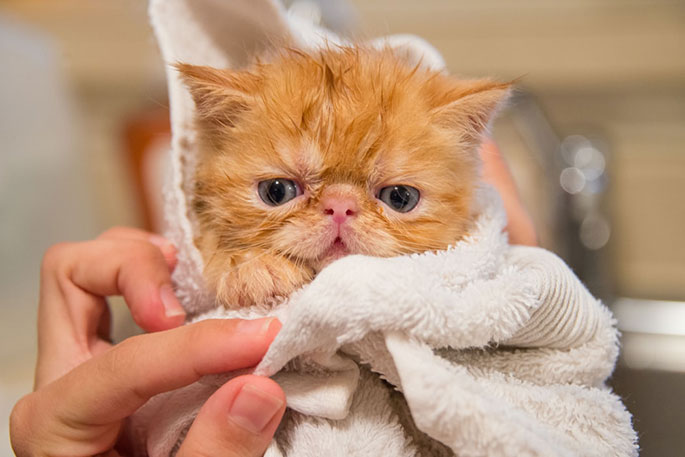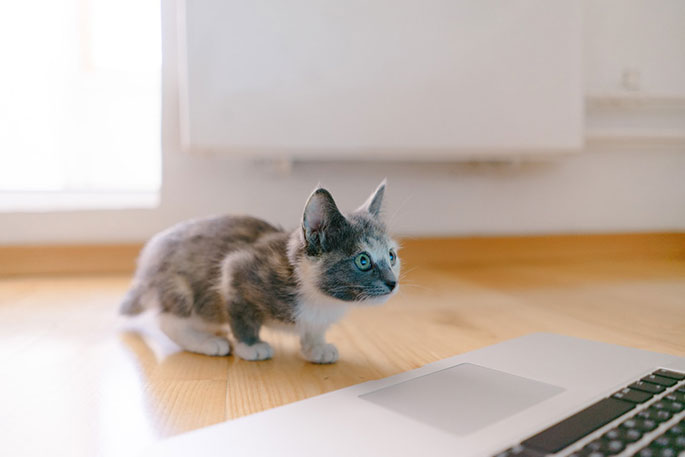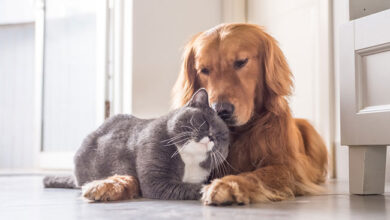
If you are planning to buy a kitten, then you need to know that your hands are full for at least a year. You see, pet animals like dogs and cats grow within a year and require a lot of attention during that time. A kitten is delivered to pet shops only a few days/weeks old. The kitten fits inside your palms. However, it is amazing to know that it can grow into a full-grown cat in 12 months or a little more than a year.
The most amazing things happen during the first ten weeks, which is why you will want to make sure that you are free from your other chores to keep an eye on your new companion. In this post, we will briefly read about the kitten development timeline for the first year, so you’ll know how to tell how old a kitten is and if their growth is normal.
1 – 3 weeks: Kittens open their ears and eyes
During the first few weeks, the mother sleeps alongside her kittens. You would be amazed to know that kittens spend the first week in the world, without seeing or hearing. During the second week, the eyes open. However, the vision may not be perfect. Hence, exposure to bright light should be avoided. The hearing starts when the ears open during the third week. This is when they can hear. Once they can walk, see, and listen well, they become more vocal and active in their movements.
3 – 5 Weeks: Kittens learn how to walk and use the litter box
In the third week, kittens become agile and intelligent. They understand their surroundings better than in the first few weeks. Though the first few steps are shaky and wobbly, the balance tends to become steady by the fifth week. The fourth and fifth week also sees the kittens being able to do things on their own, going to the bathroom, and eating food. During this period, you may want to introduce them to the litter box.
6 – 8 Weeks: Kittens get their first vaccines and socialize

Kittens love to socialize and do so by the sixth week. They become confident in their movements and want to be cuddled or pampered by their mothers or humans around them. Of course, you need to supervise these things in case they meet with accidents. Encourage them to explore around your house. This is the best way that they will get adjusted and suited quickly to the environment. Not to mention, this is the ideal time for its first vaccination. A good vet will place your kitten on follow-up shots and booster dosage.
9 – 12 Weeks: Becoming into a Cat
Though kittens keep nursing until the sixth week, they can be provided with solid food by the seventh week itself. You may want to ensure that you provide your kitten with quality kitten food available from the store. You can give your kitten canned food in limited amounts. During this stage, you can place the food in the bowl and allow them to consume as and when they want. Kittens like to take their time and eat food, which is a good thing.
Kittens usually are not separated from their mothers until the 10th week. That is because their behavior may change, and they can become aggressive. So, you may want to be patient and wait until the 10th week before bringing it to your home.
One year: Kitten is now no longer a kitten
Once your kitten reaches one year or celebrates her first birthday, she is a full-grown cat. That is right. Though she may behave childish and slightly playful at times, like all cats, she is ready to attain adulthood. This is the ideal time to give your new full-grown feline pet animal, good quality cat food. You will want to ensure that you read the instructions on the back of the cat food. This helps you understand how much to mix and how many times she should have her meal.
The adolescence period of a cat, however, lasts up to 18 months or more. Once that period is gone, your cat may still become playful at times. She may test your patience by marking territory, chewing on objects, and curling up too often, and so on. Kittens become slightly possessive of themselves during this period. There is no need to panic and become agitated. Allow her to settle down for some time. By the time you celebrate her second birthday, you will be amazed at her mature behavior.
Summary
It is nothing but pure joy and amazement seeing your little pet animal growing from a small newborn to a full-grown animal. It is similar to watch an adult grow. Being aware of few things, and knowing what to expect beforehand can help you bond with your pet animal. Cats are adorable and loving animals. They provide adequate company and are possessive about their owners. Some large cats are strong enough to protect you from large animals and intruders, just in case. Just make sure that you bring up a healthy and cheerful pet feline companion. You both will get along well.



